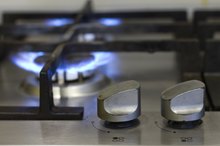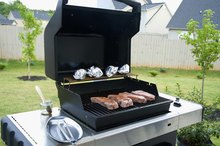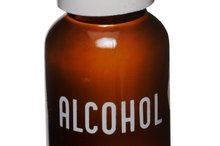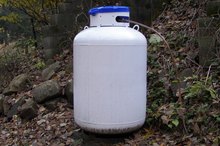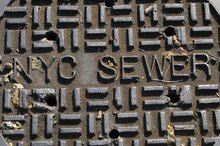Propane Stove Safety
Propane is a flammable derivative of the oil- or natural gas-refining process. It can be transported in certified tanks of many sizes, a feature that makes it a popular fuel for powering outdoor stoves. Propane stoves are convenient, but can also pose safety risks such as fire and carbon monoxide poisoning 2. The safety procedures for using a propane stove are fairly straightforward 2.
If you are experiencing serious medical symptoms, seek emergency treatment immediately.
What is Propane?
Propane is a clear fuel that burns without producing visible smoke. Under pressure propane is easily converted to a liquid, and it is stored as a liquid in pressurized tanks that can range anywhere from the size of a house down to a small handheld cylinder. When the valve on top of a propane cylinder is opened the pressure is reduced, and propane in the tank begins boiling into a light gas and exiting through the valve.
Propane Stoves
Gas Stove Burner Safety
Learn More
Propane stoves are usually portable devices used by campers and other outdoors people. Because propane is similar to natural gas, propane stoves allow people to cook with the convenience of gas flames even when they're in a remote or isolated area. Propane's high energy density, combined with its small, handheld tanks, makes it an attractive fuel choice for times when weight and space are at a premium.
Some companies like Summit and Electrolux also make indoor propane stoves that vent their exhaust outside.
As with all fossil fuels, the burning of propane can produce carbon monoxide (CO) gas, particularly when there are imperfections in the stove or an inadequate oxygen supply.
- Propane stoves are usually portable devices used by campers and other outdoors people.
- Because propane is similar to natural gas, propane stoves allow people to cook with the convenience of gas flames even when they're in a remote or isolated area.
Safe Transportation
The first step in propane stove safety is to get yourself and the flammable propane where you're going 2. U.S. Department of Transportation and industry safety standards require propane cylinders to be transported upright, in a well-ventilated area of the vehicle 24. Upright storage allows the safety valve to release propane gas in the event that tank pressure becomes too high, instead of leaking propane in denser liquid form 2.
Propane must not be left in a closed vehicle, trunk or in hot temperatures, any of which can lead to unsafe pressure inside a propane tank, or an accumulation of flammable propane gas. Propane tanks should be removed from the vehicle promptly when you arrive.
Safe Start
Health Dangers of Gas Grills
Learn More
Check the connection between the stove and propane tank for leaks several times a season. Do this by putting a soapy water solution at the joint between the tank and hose. If bubbles pop up, there's a poor fit or other problem causing a propane leak, which can lead to a fire.
If the stove fails to light after one or two attempts with its internal lighter, turn off the burners and close the propane valve. Wait one minute for any propane in the stove to dissipate and try again.
- Check the connection between the stove and propane tank for leaks several times a season.
- Do this by putting a soapy water solution at the joint between the tank and hose.
Safe Use
Even propane stoves that seem to be in good condition can produce CO gas. Carbon monoxide can build up quickly without being detected because it has no color, taste or odor, but it can be deadly to people who inhale it. This is why portable propane stoves must be used only outdoors and in well-ventilated locations.
When you're using a propane stove, watch the stove and food at all times and keep children away from the cooking area. Keep flammable materials like leaves and paper goods away from a lit stove.
Place the stove on a firm, level and nonflammable surface, away from brush or overhangs. Keep the propane tank upright. If you hear or smell a propane leak, quickly turn off the stove, immediately exit the area and call the fire department for assistance.
- Even propane stoves that seem to be in good condition can produce CO gas.
- Place the stove on a firm, level and nonflammable surface, away from brush or overhangs.
Safe Pack-up
Ensure that your propane stove has cooled before cleaning and packing it up.
Most handheld propane cylinders are not certified to be safely refilled, and attempting to refill such a bottle is both dangerous and illegal. Transport empty cylinders to a commercial propane retailer or recycling center, following the same rules of safety that apply to filled cylinders 2. The vapor remaining in an empty propane cylinder can be explosive.
- Ensure that your propane stove has cooled before cleaning and packing it up.
- The vapor remaining in an empty propane cylinder can be explosive.
Related Articles
References
Writer Bio
Aaron Zvi has been a writer and photojournalist for 10 years in Washington, D.C., and the Middle East. A student of political science and psychology from the University of Maryland, he also does technical and market analysis for a green technology company. His work has appeared in local newspapers, commissioned research and a patent or two. He began writing professionally in 1998.
